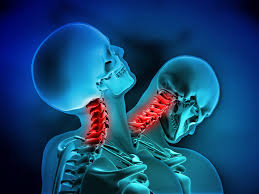Description
HEAD & NECK SURGERY: A Comprehensive Overview
Head and neck surgery encompasses a wide range of procedures addressing conditions affecting the intricate structures of the head and neck. This region includes the:
- Brain: (While neurosurgery typically handles intracranial issues, some procedures at the skull base may overlap.)
- Scalp: Including the skin, underlying tissues, and skull.
- Face: From the forehead to the chin, encompassing the eyes, nose, mouth, sinuses, and jaw.
- Neck: Including the larynx (voice box), pharynx (throat), esophagus, salivary glands, thyroid gland, and lymph nodes.
Conditions Treated:
Head and neck surgery addresses a vast spectrum of conditions, both benign and malignant, including:
Benign Conditions:
- Goiter: Enlargement of the thyroid gland.
- Salivary gland tumors (benign): Non-cancerous growths in the salivary glands.
- Cysts and fistulas: Abnormal sacs or tracts in the head and neck region.
- Facial trauma: Injuries to the face, jaw, or skull requiring reconstructive surgery.
- Obstructive sleep apnea: Surgical procedures to improve airway patency.
- Congenital anomalies: Birth defects affecting the head and neck.
- Sinusitis: Chronic or severe sinus infections.
- Vocal cord disorders: Affecting voice production.
Malignant Conditions (Cancers):
- Oral cancer: Cancers of the mouth, lips, tongue, and floor of the mouth.
- Pharyngeal cancer: Cancers of the throat.
- Laryngeal cancer: Cancers of the voice box.
- Thyroid cancer: Cancer of the thyroid gland.
- Salivary gland cancer: Cancerous growths in the salivary glands.
- Skin cancers of the head and neck: Including basal cell carcinoma, squamous cell carcinoma, and melanoma.
Surgical Techniques:
The surgical techniques employed in head and neck surgery are diverse and highly specialized, ranging from minimally invasive procedures to complex reconstructive surgeries. These may include:
- Endoscopic surgery: Minimally invasive procedures using small incisions and specialized instruments.
- Laser surgery: Precise surgical removal of tissue using laser technology.
- Open surgery: Traditional surgical techniques requiring larger incisions.
- Reconstructive surgery: Repairing damaged tissues using grafts, flaps, or implants.
- Robotic surgery: Utilizing robotic systems for enhanced precision and dexterity.
Post-operative Care:
Post-operative care varies depending on the specific procedure but often includes:
- Pain management: Medications to control pain.
- Wound care: Keeping the surgical site clean and protected.
- Speech therapy: To help regain normal speech function following laryngeal surgery.
- Swallowing therapy: To address swallowing difficulties.
- Radiation therapy and/or chemotherapy: Often used in conjunction with surgery for cancer treatment.
Importance of Early Diagnosis and Treatment:
Early diagnosis and treatment are crucial for optimal outcomes, particularly in cases of cancer. Regular check-ups and prompt attention to any concerning symptoms are essential.
Disclaimer: This information is for general knowledge and does not constitute medical advice. Consult with a qualified head and neck surgeon for any health concerns or before making any decisions related to your health or treatment.
